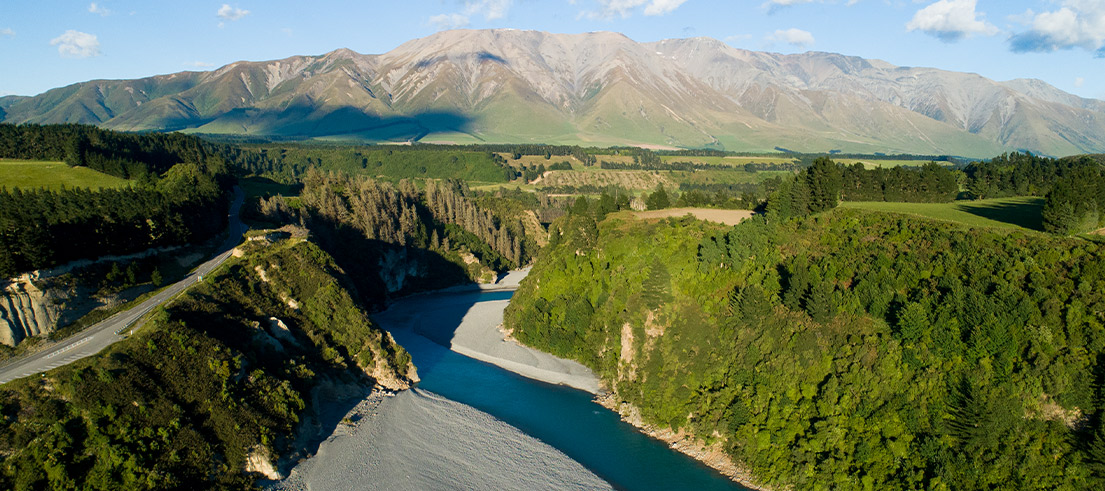
Targeting threatening weeds in Rakaia Gorge
An intensive weed control project in Rakaia Gorge will help protect the area's rare and precious native plants and trees.
It's being carried out over four years and began after Selwyn District Council, Environment Canterbury, and landowners asked for an assessment of the gorge's ecological values and the weeds that threaten them.
The gorge is rich in native biodiversity. It's home to diverse mixed hardwood species (covering an estimated 120 hectares), bluff shrublands (an estimated 100ha), tussockland, grasslands and two large wetlands.
At least 16 threatened and at-risk native plant species have been recorded - including Canterbury pink broom and rōhutu/myrtle - both nationally critical, along with others that are regionally uncommon.
Weeding out the key threats
A three-month-long ecologist survey in 2019 (which included a helicopter flight across the study area), discussions with landowners, and fieldwork, identified sycamore and cherry as two of the priority weeds in the catchment. This is due to their spread dynamics and risk factors to native vegetation. Both species are now being targeted mostly through ground control efforts.
Cotoneaster and wilding conifers will also be a focus of the project, which has been made possible through the collaborative efforts of landowners and several agencies.
We have contributed $30,000 in funding so far. Other financial contributors include the Ministry for Primary Industries, the Trustpower Rakaia Catchment Environmental Enhancement Fund and Land Information New Zealand.
Selwyn District Council is helping with the operational aspects and is also funding work in the area that ties in with the project.
The five landowners across the site are making 'in kind' contributions such as removing cherry and other weed trees and removing and restoring other hill faces on farms within the project area.
Preservation through collaboration
Land management and biodiversity advisor, Billy Bartrum, describes the catchment as a stunning landscape - comprising lots of rare and threatened plants, and he's thrilled by the efforts to preserve it.
"It's a real collaboration. This couldn't happen without the help of those from other agencies."
Andrew Spanton, senior biodiversity advisor at Selwyn District Council, agrees.
"Apart from previous landowners' efforts, there has been little attempt by agencies to control the weeds that threaten the native species in the gorge.
"This multi-partnership project is a great example of landowners, stakeholders and agencies working together to protect and manage our significant areas of indigenous biodiversity," Spanton said.
